Free Courses Sale ends Soon, Get It Now


Free Courses Sale ends Soon, Get It Now


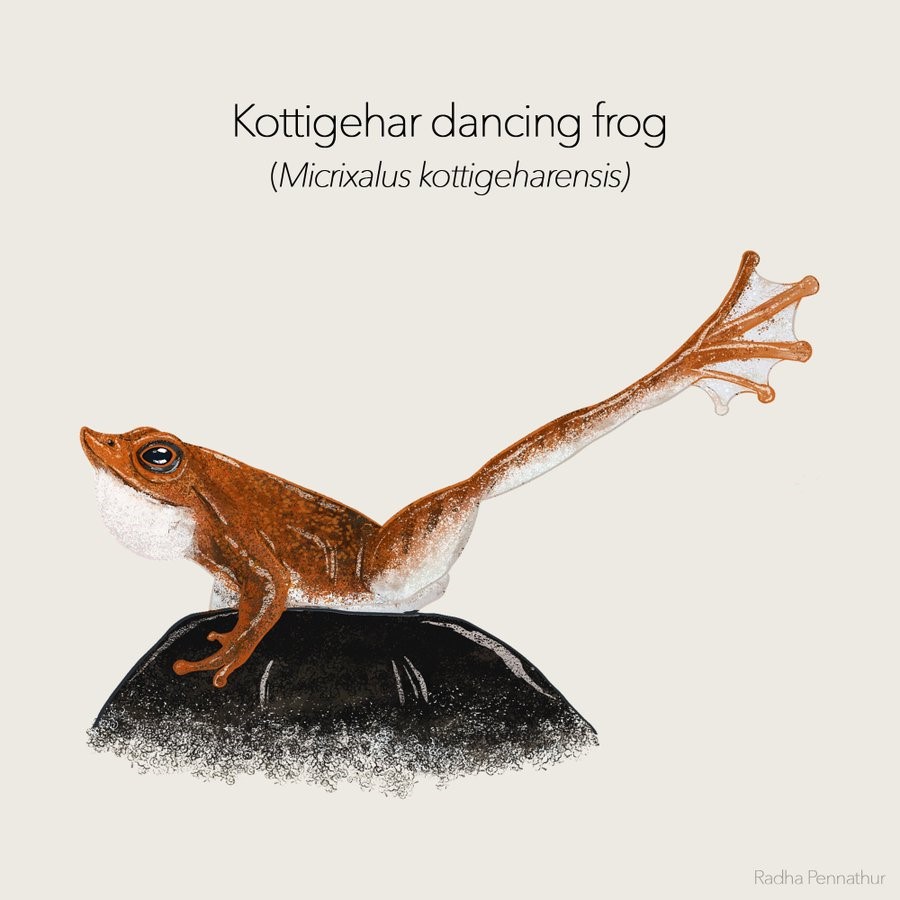
Disclaimer: Copyright infringement not intended.
Context
Dancing frogs
About
Range
Description
The Act of Foot Flagging
Habitat
Threats
Conservation Status
Status of Frogs: WTI Report Findings
Other Threatened Species
Conservation Efforts
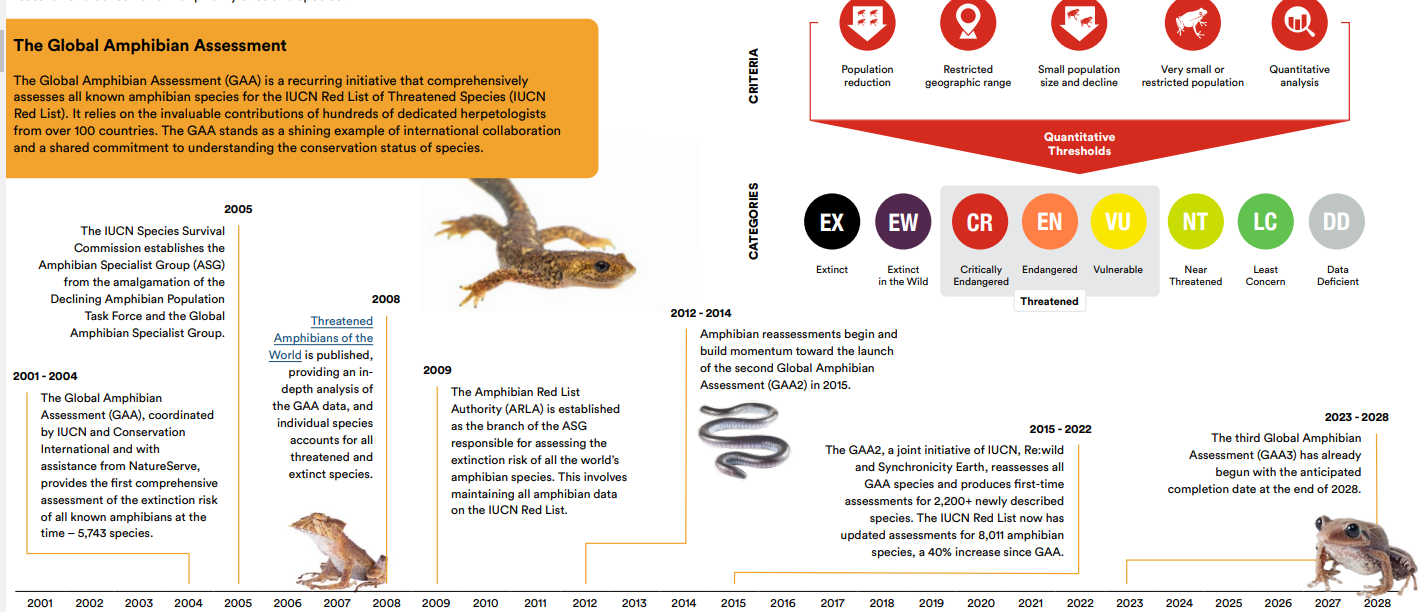
The Global Amphibian Assessment
The GAA stands as a shining example of international collaboration and a shared commitment to understanding the conservation status of species.
Findings of GAA2
41% of amphibians are globally threatened with extinction, making them the most threatened vertebrate group.
Habitat loss remains the most common threat to amphibians, affecting 93% of threatened species.
READ ABOUT Chytridiomycosis
: https://www.iasgyan.in/daily-current-affairs/chytridiomycosis
https://www.iasgyan.in/daily-current-affairs/batrachochytrium-dendrobatidis
Amphibian species are not evenly distributed across the globe.
Mountains of Tanzania, Madagascar, the Western Ghats of India, Sri Lanka, and central and southern China.
Conservation needs to be massively scaled up
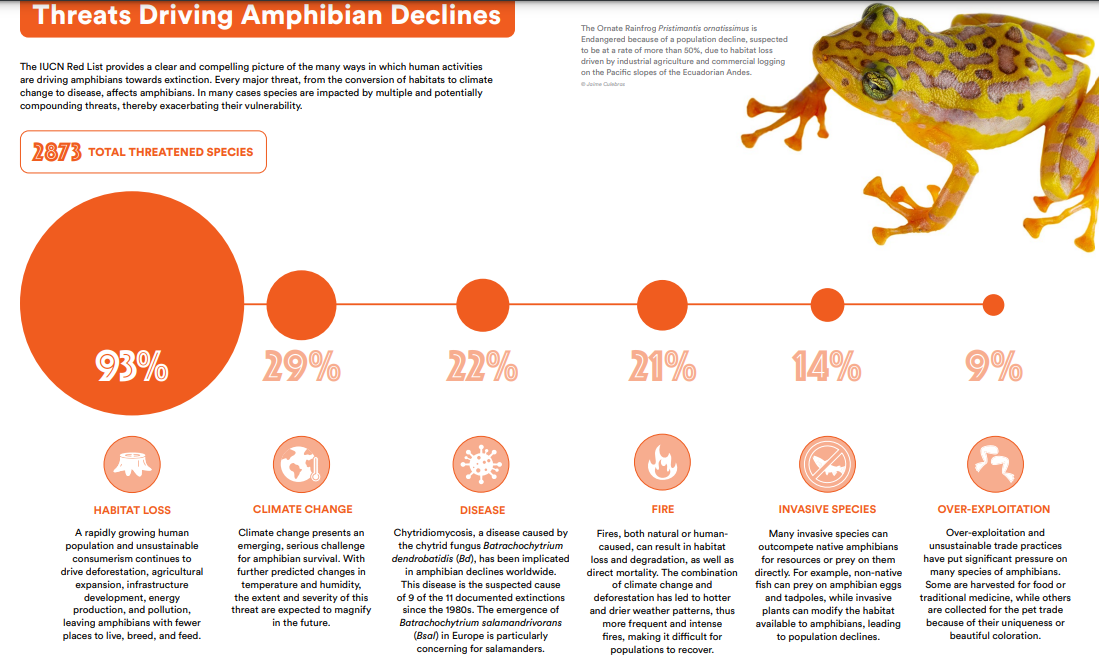
Way Ahead
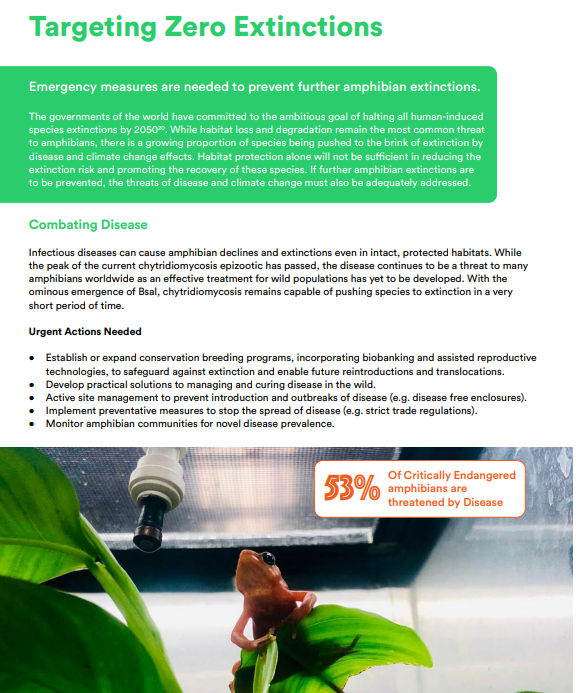
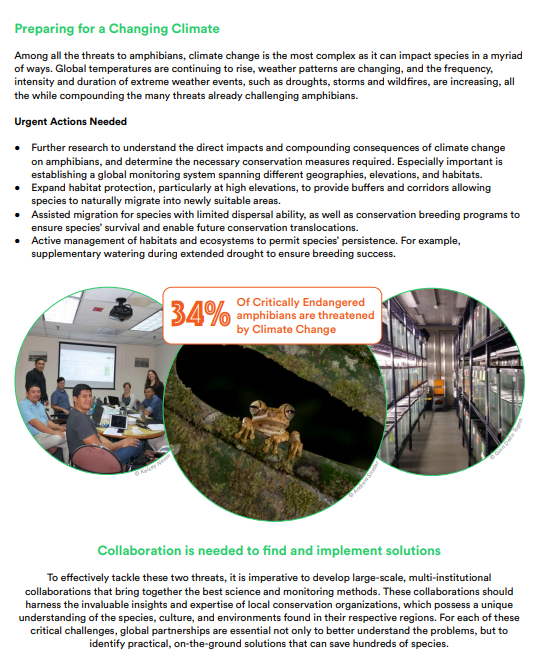
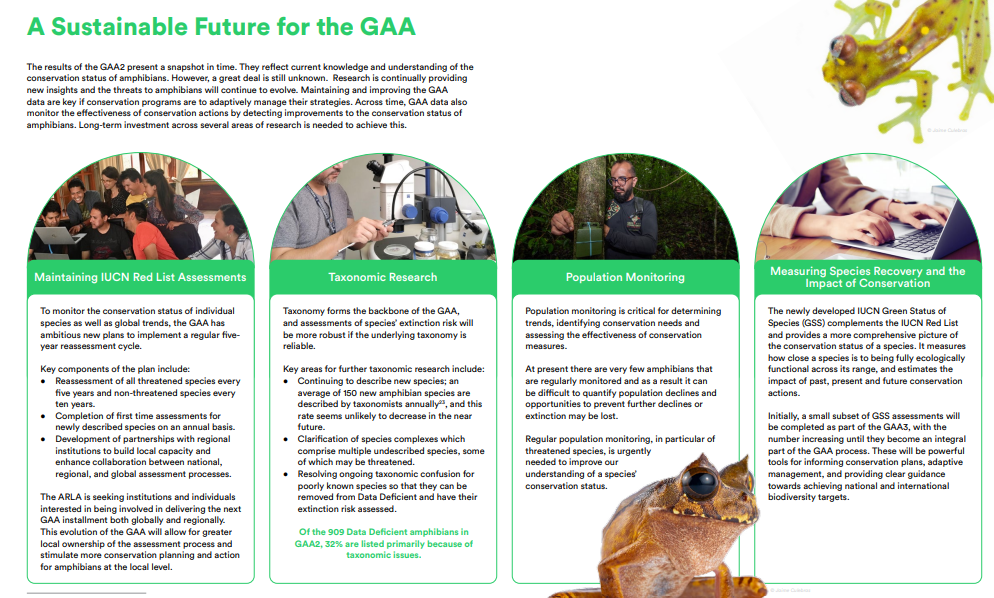
|
AMPHIBIANS Amphibians are cold-blooded vertebrates (vertebrates have backbones) that don’t have scales. They live part of their lives in water and part on land. They are made up of frogs, toads, salamanders, newts, and caecilians (wormlike animals with poorly developed eyes). All amphibians spend part of their lives in water and part on land, which is how they earned their name—“amphibian” comes from a Greek word meaning “double life.” These animals are born with gills, and while some outgrow them as they transform into adults, others retain them for their entire lives. Amphibians are the most threatened class of animals in nature. They are extremely susceptible to environmental threats because of their porous eggs and semipermeable skin. Every major threat, from climate change to pollution to disease, affects amphibians and has put them at serious risk. Amphibians are Ectothermic An ectotherm more commonly referred to as a "cold-blooded animal", is an animal in which internal physiological sources of heat are of relatively small or of quite negligible importance in controlling body temperature. Such organisms (for example frogs) rely on environmental heat sources which permit them to operate at very economical metabolic rates. Amphibians are Anamniotic The amniotes are an informal group of craniates comprising all fishes and amphibians, which lay their eggs in aquatic environments. They are distinguished from the amniotes (reptiles, birds and mammals), which can reproduce on dry land either by laying shelled eggs or by carrying fertilized eggs within the female. Amphibians exhibit Metamorphosis Metamorphosis in amphibians is a process on which the amphibians undergo abrupt physical changes in order for them to survive the transition of living in water to living on land. The animal body undergoes rapid and dramatic changes during amphibian (anuran) metamorphosis to adapt from the aquatic to the terrestrial life. The larva-specific organs such as the tail and the gill degenerate, while the adult-specific organs such as the forelimbs develop. Double Respiration Most amphibians breathe through lungs and their skin. Their skin has to stay wet in order for them to absorb oxygen so they secrete mucous to keep their skin moist (If they get too dry, they cannot breathe and will die). |
Wildlife Trust of India
About
Commitment and Mission
Formation
Registration
Mandate
Core Team
Priority landscapes
Jointly run centres
WLT-WTI partnership
Projects and Activities
WTI focuses on nine key areas in their work:
|
World Land Trust The World Land Trust is a UK-registered charity. It raises money to buy and then protect environmentally-threatened land in Africa, Asia, and Central and South America. The trust was founded in 1989 as the Programme for Belize to raise money to privately buy land in Belize to protect tropical rain forests. |
|
PRACTICE QUESTION Q. Consider the following statements: 1. Kottigehar Dancing Frog is endemic to the Western Ghats in Karnataka. 2. The species are found to prefer habitats in areas with thick canopy cover of at least 70-80 percent. 3. 92 percent of its species are in the threatened category. Which of the above statements is/are incorrect? A) 1 and 3 only B) 2 only C) 3 only D) None Answer: D) None |
© 2024 iasgyan. All right reserved